How to grow a bumper crop of carrots (containers or garden)
Are you ready to grow a bumper crop of carrots? I have you covered with the practical tips for starting carrots from seed for the biggest bunch you’ve ever raised.
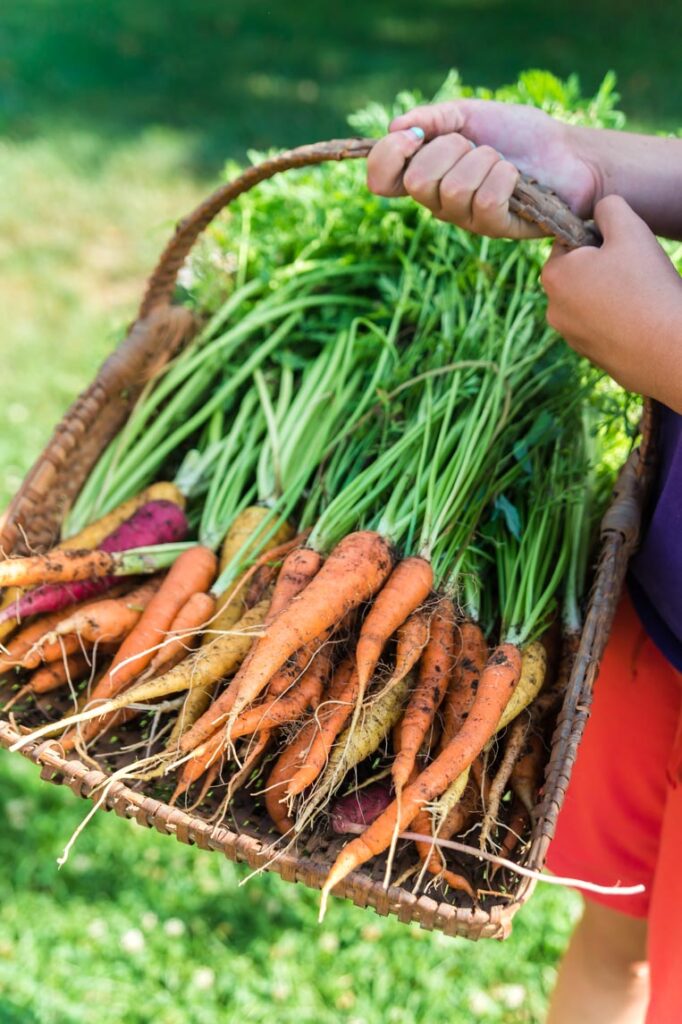
I have big plans for carrots every growing season. Last year I made homemade chicken stock and then canned it with onions, celery and carrots from my garden.
It’s immensely satisfying to see your work ready to eat.
It’s possible for you too. Carrots are actually quite easy to grow with a few fundamentals:
- Loose soil. You’re eating the root and it can’t grow big and healthy in hard ground.
- Sowing them at the right time.
- Keeping them watered and nourished.
Table of contents
How long do carrots take to grow?
Each variety will be a little different from type to type, but plan for it to take 2 to 4 months from sowing to harvest. You can plant more seeds every three weeks all the way from early spring until 10 weeks before frost hits for a steady supply.
Growing carrots from seed
Start seeds outdoors and sow them where you want to grow them. Carrots don’t transplant well. Even though I love milk jug sowing just about everything, these are one of the few plants that I do use that method for.
Sow your carrot seeds outdoors 3 to 5 weeks before your last spring frost. Don’t know when that is? Check the frost dates for your area and count backward.
Prepare the soil
Carrots need loose, sandy soil. You don’t want to grow them in actual sand by itself but you can add sand to harder soils to loosen it. Make sure there are no rocks or even hard dirt clods where the carrots will grow.
Till down at least 12 inches depending on how long the carrots you have chosen will grow and work your soil until it’s almost a powder.
It’s a pain in the butt. Let me tell ya.
Don’t add fertilizers like manure or store bought fertilizer–it will cause the carrots to grow side shoots. You can add used coffee grounds to your soil if you want to amend it.
If your soil is hard clay like it is here in Kentucky, plant your carrots in a raised bed or pot. Your life will be about a thousand percent easier. Use a good potting mix (not a seed starting mix). I prefer organic and have good luck with Happy Frog and Black Gold soils. A good bag of soil will cost close to $40.
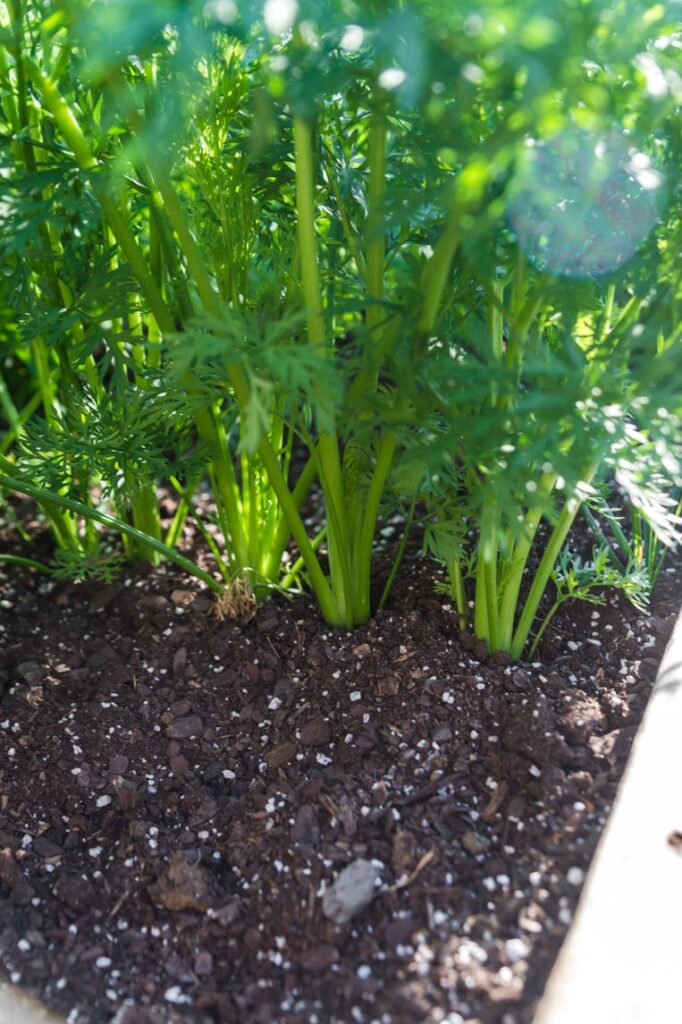
Avoid wasting seeds
Carrot seeds are mind numbingly small. To avoid wasting seed and hopefully get a more even distribution, consider buying pelletized carrot seeds which are covered in a coating to make them larger and easier to handle or pick up a seed dropper like this one:

Make your rows
Use your finger or a straight stick to make a row 1/4″ deep. It’s very shallow. Drop seeds every 2-3 inches and space the rows a foot apart. It can take 2 to 3 weeks for your seedlings to appear so be patient!
Water regularly
Water your seeds with a spray bottle, mister, or watering can with a fine spray to keep the soil moist but not soaking wet. If you pour water too vigorously on tiny seeds you risk washing them away.
You don’t want your soil to make a hard crust on the top so keeping the soil moist is really important.
Thin the seedlings
When your seedlings are a couple of inches tall, take a pair of scissors and trim off the stems of any that are growing too close together. Thin your plants to 3 to 4 inches apart.
Don’t pull them up to thin them–you’ll likely pull up the one you were trying to keep too.
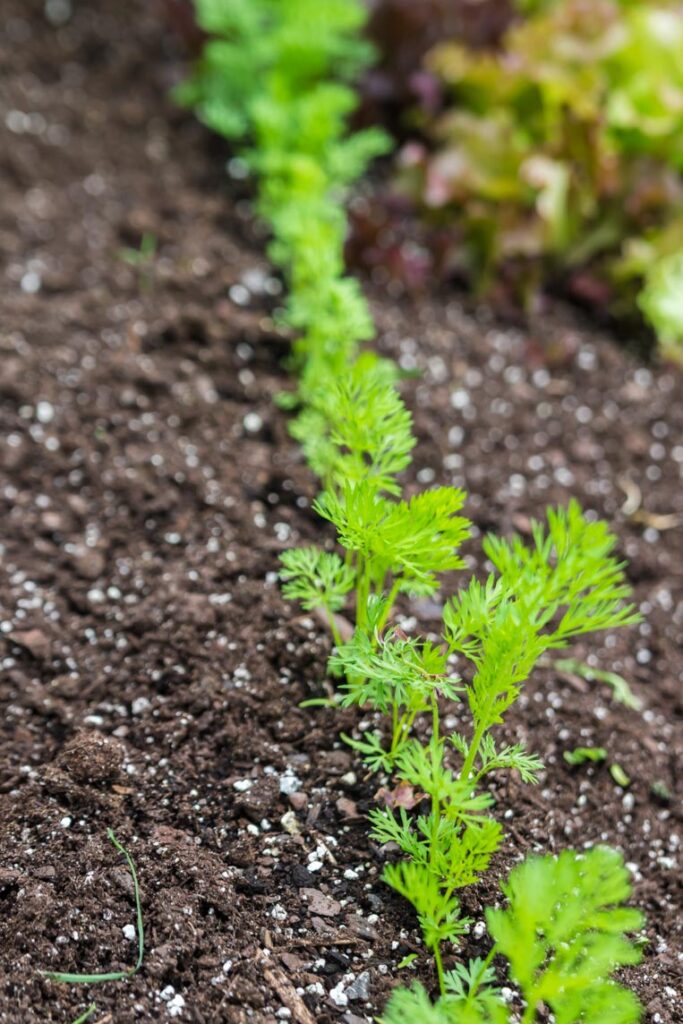
What carrots grow best in containers?
You can grow any carrot in pots as long as the container is deep enough. You’d not want to grow a 12″ carrot in a 6″ deep pot. These Kyoto carrots are beautiful and grow 10-12″ long. For a more shallow growing area, try a Parisienne carrot.
Remember raised beds and containers may dry out faster so be prepared to water regularly.
What carrots grow best in hard or clay soil?
No carrot does wonderfully in rock hard soil so make sure to till and loosen yours as much as you can. Opt for carrots that are round instead of long and thin. Look for “Rondo”, “Parmex” or the “Parisienne” I mentioned above. You can find more carrots and soil types in this article.
How to know when your carrots are ready to harvest
Carrots may be harvested at any size you prefer. Many people like theirs as small as ½” in diameter. To check the size of yours, gently brush away the an inch or two of soil from around the carrot so you can see how large it is.
If you want it bigger, simply brush the soil back up against the carrot and let it grow longer.
Carrots may become tough and fibrous if they’re exposed to too much summer heat so keep that in mind as yours grow.
As a good rule of thumb, I recommend watching for the “shoulders” to appear. This is simply the very top of the carrot as it sticks up above the ground just a little bit. Once I see some shoulders it’s time to harvest.
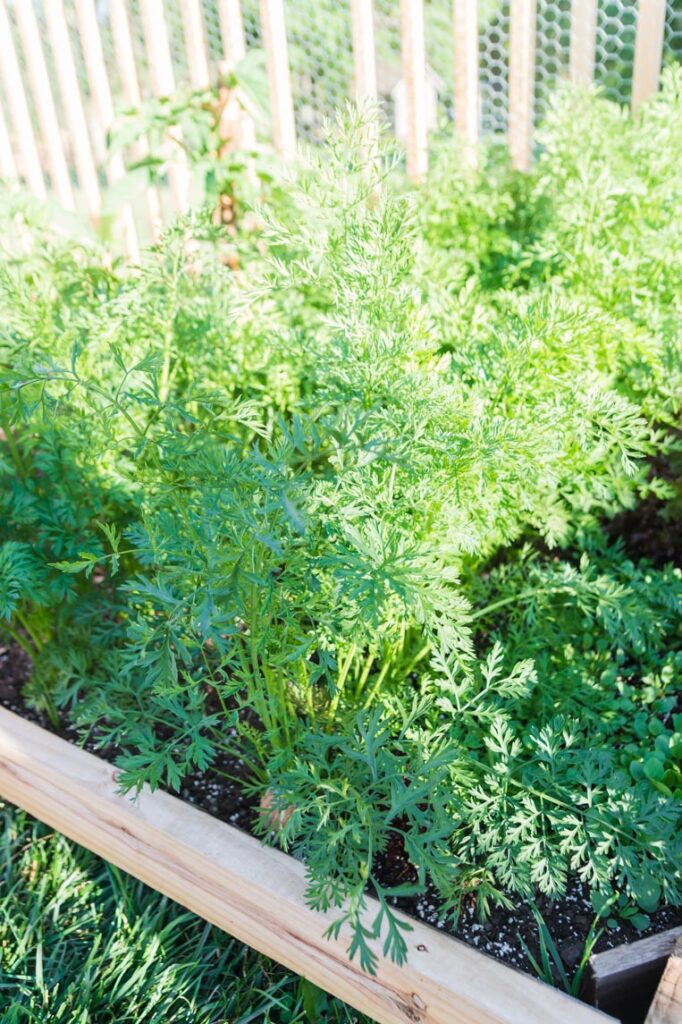
Storing and preserving carrots
To refrigerate carrots, cut off all but ½” of the stem, knock off any loose dirt, and place the carrots in the crisper of your refrigerator where they can last several weeks. If you leave the entire top on the carrot they will go floppy and limp in just a few hours.
You can also leave your carrots right where they have grown for awhile. Mulch them heavily with 18 inches of leaves, mulch or compost and simply remove it to pull up a couple at a time. A few frosts on them will make them sweeter but you should pull them all up before there’s a deep freeze.
Carrots can be blanched and frozen, pressure canned, pickled, or you placed in a bucket with several layers of sawdust and stored in a cool dark area for use through the winter.

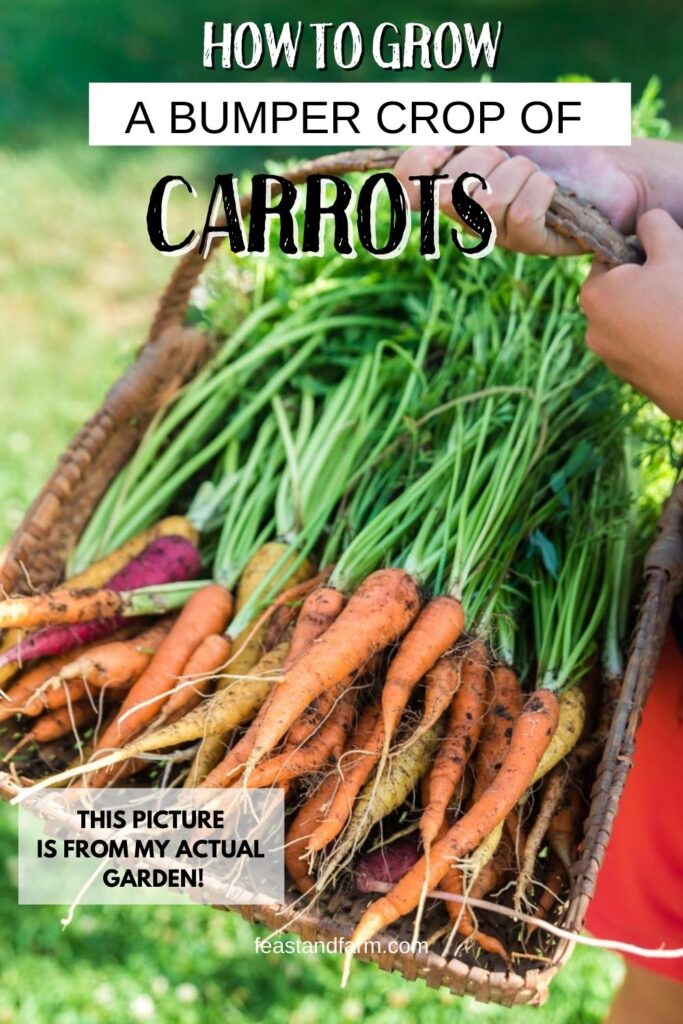

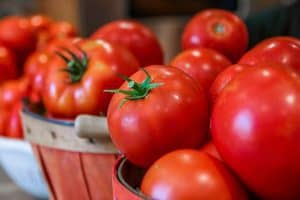
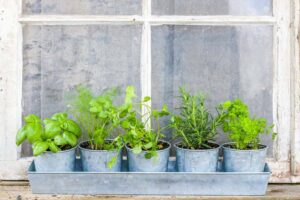




About the Author
Rachel Ballard, RN, BSN brings more than 20 years of professional nursing expertise to Feast and Farm. With a love for nutrient dense foods that support wellness, she works to distill complex health information and current trends into recipes that fuel the best version of yourself. Read more about Rachel here.